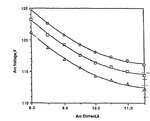AshwinNambiar
Junior Member level 1
want to design a circuit on NI MULTISIM which is like:
The input voltage of around 100 to 150 V and input Current 10A;
The circuit designed should be such that at the output i need an increasing current with the decrease in voltage;in other words the motive behind the circuit design is to have an EXPONENTIALLY DECREASING curve of voltage to current.
Also i want to know how to plot voltage Vs current graph on NI MULTISIM,i get a voltage Vs time graph or current Vs time graph but i require a Voltage Vs current graph ,please advice how;also the circuit design for the exponential decreasing curve of the same would be helpful.I've tried with least success.A beginner trying to learn these.Please help.
The input voltage of around 100 to 150 V and input Current 10A;
The circuit designed should be such that at the output i need an increasing current with the decrease in voltage;in other words the motive behind the circuit design is to have an EXPONENTIALLY DECREASING curve of voltage to current.
Also i want to know how to plot voltage Vs current graph on NI MULTISIM,i get a voltage Vs time graph or current Vs time graph but i require a Voltage Vs current graph ,please advice how;also the circuit design for the exponential decreasing curve of the same would be helpful.I've tried with least success.A beginner trying to learn these.Please help.
